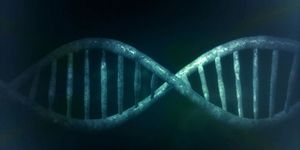Wave-Matter Duality Observed on a Biological Macromolecule for the First Time
Quantum physics tells us about the properties and behaviors of atomic and subatomic particles. But scientists have long held the belief that the rules that govern the microscopic world should also be applicable to the macroscopic realm. The key is to know where and how to look.
In a recent study, a team of researchers, led by physicist Markus Arndt at the Quantum Technology Center in Vienna, Austria, demonstrated for the first time that a quantum feature of tiny particles called wave-matter interferometry can be observed with a biological macromolecule.
As defined by quantum mechanics, our world exists in a wave-particle dual state, which means that matter can behave like both particles and waves. In the classical double-slit experiment, visible light rays, which are a type of electromagnetic waves, are superimposed, causing the phenomenon of interference.
Superposition of matter-waves has been previously achieved for subatomic particles such as electrons and neutrons, as well as atoms and small molecules. But scientists still have problems conducting matter-wave interferometry on larger molecules because they can easily be broken down into pieces during a measurement.
Back in 1999, Arndt and his colleagues published a study that demonstrated wave-particle duality in fullerene molecules (C60), which is a macromolecule with a atomic mass of 721.
This time, the physicist and his team at the University of Vienna took on the challenge of demonstrating wave-particle duality in an antibiotic called gramicidin. It is a polypeptide that comprises 15 amino acid residues and has a mass of 1882.
They first agitated and isolated a sample of gramicidin with a short-pulse laser, and had the macromolecules preserved and carried in an argon gas stream with a speed of 600 meters per second. Then they used a Talbot-Lau interferometer to catch the stream of molecules and measure the interference of the gramicidin wave, which is about more than 20 times the size of the molecule.
While their wave-matter duality experiments won't provide any biologically relevant information of gramicidin such as its structure and interactions with its matrix environments, they showed that quantum phenomena can be observed with using the large biomolecule under non-destructive conditions and ambient temperature.
The authors hope to extend their investigations into proteins and DNA fragments using wave-matter interferometry, as a quantum physics-assisted technique to probe the optical and electronic properties of biomolecules.
This study was published with the preprint server arXiv.
Want to learn more about quantum biology? Check out this video from TED Talks.
How Quantum Biology Might Explain Life's Biggest Questions | Jim Al-Khalili (TED)
Source: MIT Technology Review









